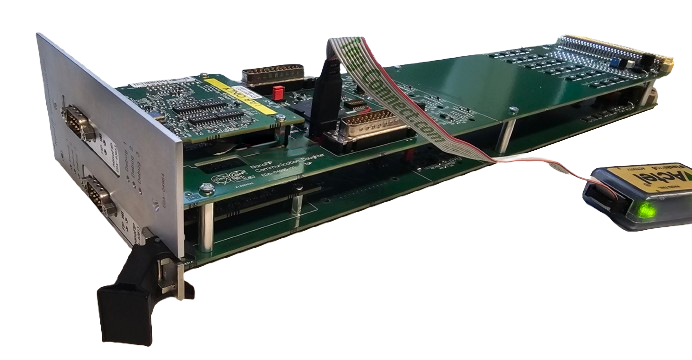NanoFIP communication card
The cryogenics crate is designed to house different type of cards essential for cryogenic system operations.
These include peripheral cards such as cards that collect data from temperature sensors, power cards which power all crate cards,
and communication cards that enable seamless data exchange between peripheral cards and the WorldFIP network.
Currently, over 1000 communication cards are installed, with most deployed in the Large Hadron Collider (LHC).
Each cryogenics communication card comprises two PCBs: a motherboard, which collects data from all peripheral cards positioned
on the left side of the communication card, and a daughterboard, responsible for collecting and transmitting data to the cards on the right side.

The MicroFIP module is composed of three main components:
• MicroFIP ASIC: Custom-designed chip that manages WorldFIP protocol communication.
• Field Drive: Module which handles signal transmission to and from the WorldFIP network, ensuring compatibility with network signal transmission.
• Isolation Transformer: Transformer which provides electrical isolation to protect components and maintain signal integrity.
MicroFIP ASIC was phased out by Alstom, the company responsible for its production. To address this, CERN developed an in-house solution: the NanoFIP FPGA Mezzanine Card (FMC). This new FMC replaces the MicroFIP ASIC with the NanoFIP, an Actel ProASIC3 FPGA that reproduces a subset of the original MicroFIP's functionalities.
Like its predecessor, the NanoFIP FMC contains:
• NanoFIP: Actel ProASIC3 FPGA manages WorldFIP protocol communication.
• Field Drive.
• Isolation Transformer.
The Wishbone protocol is used for communication between the NanoFIP and the FPGA on the communication card. Given that CERN's cryogenics group must support the WorldFIP communication network until the end of the HL-LHC's operational life - at least up to 2035, additional communication cards are required in the coming years.




